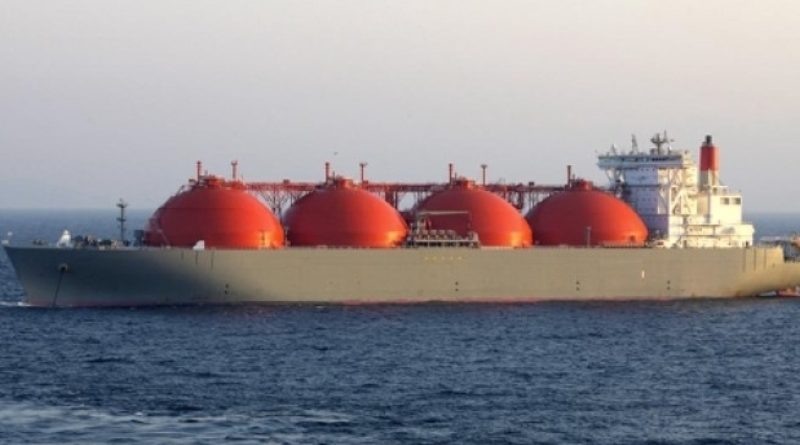Profits Skyrocket for US LNG Companies
By Ariel Cohen, Alum of The Fletcher School at Tufts University
The United States is poised to become the world’s leading liquefied natural gas (LNG) exporter by the year’s end. The US Energy Information Administration forecasts the country will export a whopping 12.2 billion cubic feet per day (Bcf/d) average to surpass Australia and Qatar for the top spot.
Demand is high as Europe tries to reduce gas imports from Russia following its invasion of Ukraine. Europe was the top destination for US LNG for the fourth straight month, receiving 65% of total exports. The EU’s pledged to reduce its consumption of Russian natural gas by nearly two-thirds before the year’s end. Before this, the main American export market was Asia—Japan, China, and Korea.
American shale producers and LNG exporters are already trying to take advantage of this surge and secure long-term contacts and financing for new projects. Companies that can provide floating regasification capability and supply to multiple markets stand to cash in.
The export industry emerged six years ago when Houston-based Cheniere Energy shipped the first American LNG cargo internationally from its Sabine Pass facility. A year later the US, became a net exporter of natural gas. The shale revolution spurred an enormous increase in drilling and left the US with an excess of natural gas available to liquefy and export. Today, with seven export terminals and capacity expansions at Sabine Pass and Corpus Christi LNG terminals, US peak capacity is expected to reach 13.9 Bcf/d.

After the Russian invasion of Ukraine, American export projects have gained even more momentum in the country. After raising $15 billion for new projects, leading infrastructure investor, I Squared Capital, eyes the LNG sector for investment. With three to four multi-billion-dollar projects looking for financing this year, the private capital firm is on the money.
Tellurian TELL +0.4% Inc’s share price is up by more than 24% compared to last month. Excelerate Energy Inc, which operates a fleet of floating import terminals, raised $384 million through its IPO, making it the second-largest IPO in the US this year.
Share price increases reflect a shift in investor confidence towards the Biden administration and its stance toward the natural gas industry. After President Biden pledged to further increase LNG exports to Europe by an additional 50 billion cubic meters annually, stocks skyrocketed.
Despite market optimism for the natural gas industry, questions remain over the long-term prospects for the industry.
Over the next few years, LNG imports, especially those from the US, will continue to be a crucial part of the EU strategy toward energy independence from Russia.
However, the EU is still somewhat hesitant to invest in the LNG infrastructure. Natural gas projects come under pressure from environmental groups and undermine Brussels’ goals for achieving climate neutrality by 2050.
In 2020 France’s Engie SA infamously halted talks with US LNG developer NextDecade as it came under pressure not to import LNG produced from shale gas. The memory of events like this one may damper investor confidence in the long-term viability of projects aimed at exporting to Europe.
Nevertheless, the war in Ukraine has eroded some of the European skepticism towards LNG and opened new opportunities to US producers. Finland, Latvia, Estonia, and Germany recently expressed the desire to move forward with new LNG import terminals. Sempra, which has plants on both the Atlantic and Pacific is poised to cash in, given its competitive advantage because it can dispatch supplies to Europe and Asia.

There are also promising developments towards the construction of floating storage regasification units (FSRU), as, in addition to Lithuania, Latvia and Estonia are determined to eliminate Russian gas imports outright. Excelerate Energy, a provider of floating storage and regasification units, stands to win contracts. Golar, which specializes in oceangoing LNG production and processing, is another option for these countries.
Germany may be another destination for American exporters. Last year, the country received more than half of its natural gas from Russia. However, German terminals in Brunsbuettel and Wilhelmshaven still await final investment decisions to be made, given strict environmental rules and bureaucratic sluggishness, both projects remain surrounded by uncertainty.
The pace of development of LNG infrastructure is asymmetrical on both sides of the Atlantic. American LNG developers are unwilling to construct liquefaction facilities known as “trains” that are not secured by long-term contracts from European countries and are instead self-financed: it is a risky bet. However, Putin’s war has exposed the self-inflicted rickety foundations of Europe’s energy system. The harsh reality may force a reversal in Brussels and Berlin over their laudable but unrealistic goals to abandon natural gas so soon. Regardless, the future for American LNG is promising.
With assistance from Andrius Urbelis
This piece is republished from Forbes.

